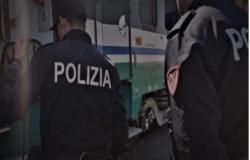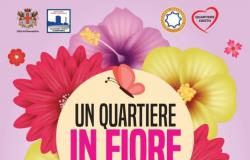The walls of Gela at the center of the scientific dissemination activity of the Lions Citta Murate with an important event that involved varied realities from around the world.
They arrived from all over Italy, from San Marino, Malta, France, the United Arab Emirates and from many other places in the world for an international conference of the Lions walled cities in Gela and Sciacca. An important moment for relaunching the image of the city and the area.
The XX Congress in Gela and Sciacca was held at the Eschilo theater: announced in Rome a month ago as part of an official convention of the Walled City Lions whose international vice-president is the engineer from Gela. Franco Butera.
Not only a conference but also cognitive explorations of the territory sworn by Butera to admire the beauties and history of Sicily: yesterday morning the visit of the Federician walls and the Acropolis with Mulé, in the afternoon the Timoleonte Walls with the Panvini archeology in front of which visitors expressed praise astonished by such beauty. The director of the Gattuso Museum presented the Sicily of myths project, an initiative to enhance the territory which aims to relaunch the city. The intervention of the President of the international foundation Giacomo Beorchia was on this tenor, based on the comparison of the intervention on the walls and monuments between the various realities.
“Over seventy years have passed since the moment in which Vincenzo Interlici, who owned agricultural land in Gela, in the Capo Soprano area, brought to light a section of a wall structure, exchanged with the remains of the Greek theater which had always been sought the traces – said Panvini ‘
The archaeologist Pietro Griffo, Superintendent of central-southern Sicily at the time, understood that it was an ancient structure and undertook, with a team of workers, the archaeological excavation of the area, entrusting the scientific direction to Dinu Adamesteanu, the Romanian scholar who it had been operating in Sicily for a couple of years.
The wall was covered by a substantial blanket of sand, a real dune, locally called maccone, formed over a long period of time in this western stretch of the hill on which the Rhodian-Cretan colony of Gela was founded in 689- 688 BC The latter, since the years following the aforementioned ones, had developed on the eastern stretch of the low hill, which overlooked the Mediterranean Sea and was lapped, to the east, by the course of the Gelas, of which it could also control the mouth.
It was not difficult to remove the thick layer of sand, which was accumulated on the slopes and on the slopes of the southern side of the hill up to the base of the wall which was gradually brought to light and which turned out to have, on that side, a maximum height of almost 3.20 metres. The archaeologists found themselves faced with a very particular fortification structure since it had been built, in the lower part with well-squared blocks of limestone and, in the upper part, by a raising of mud bricks, arranged in regular and perfectly isodomic courses ( 10
The wall was brought to light for a total length of 360 meters and extended towards the West, controlling the plain below and protecting one of the access gates to the city on the route to Agrigento; then, it went around the hill and continued north, in the direction of the area today known as Piano Notaro where, however, it is only preserved in the first sections of the limestone base.
Indeed, Adamesteanu believed that the different colors of the bricks and the plaster spread on their surface could correspond to three different moments of construction of the structure coinciding with Agathocles’ assaults on the city: it could be dated from 339 BC, i.e. he age of Timoleon, the Corinthian leader, who came to Sicily to re-establish democracy in the Sicilian cities, torn apart by political struggles.
Gela was also included in this project, which involved the rebuilding of the city, destroyed in 405 BC by the Carthaginians and the area of Capo Soprano was identified as the most suitable for the new buildings; in fact, both the discovery of the fortification wall and the remains”.
“The medieval city of Eraclea was founded by Frederick II of Swabia in 1233 in the area of ancient Gela. In that year the emperor stopped in Butera probably to follow the works for the foundation of the new city – said Panvini –
– he had already stipulated commercial agreements with the emir of Tunis (1231);
– had repressed the revolt of Messina, destroyed the cities of Centuripe and Troina and founded Augusta (1232).
Eraclea was therefore built both to cultivate the plain behind it and to be an important observation and control point on the southern coast, devoid of inhabited areas between Licata and Capo Passero.
Until the end of the 1980s, little was known about the medieval city and it was believed that the medieval structures had been lost due to the transformations that occurred following industrialization.
The research on the city, the walls and the ceramic productions were started with the exhibition “Kilns, castles and wells of the Middle Ages” in 1990 curated by the Superintendency of Agrigento then competent for the territory and the related catalogue, followed by a conference whose proceedings were published in 1991.
Later, studies on cartography conducted by Liliane Dufour and Ignazio Nigrelli finally clarified the meaning of old land and new land, terms used by Fazello and by topographical maps, and it was understood that probably at the end of the 14th century a wall (after the plague, the assault of the Barbary people and the Aragonese siege) had to divide the city into two parts: the one to the east was the Terranova which continued to be inhabited, the one to the west was the old land so called because it was left abandoned. In the median wall of the city and on the strata maiori dedicated to the curso a new gate was opened, the gate of the wagons…”.

During the visit of the Federician walls, the congress participants stopped at the Federician Walls of the Santa Maria di Gesù complex where guests were able to enjoy the music offered by the gospel choir and a film of the puppies of the Lions Club Gela Environment Territory Culture.
He collaborated with the master of ceremonies of the LC Gela Host, Dr. Gaetano Trainito.








